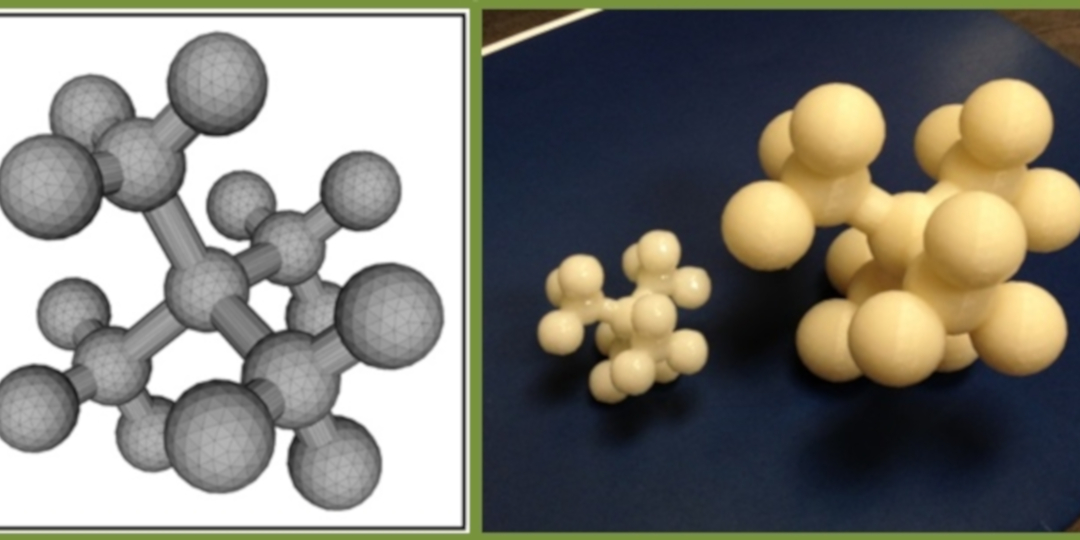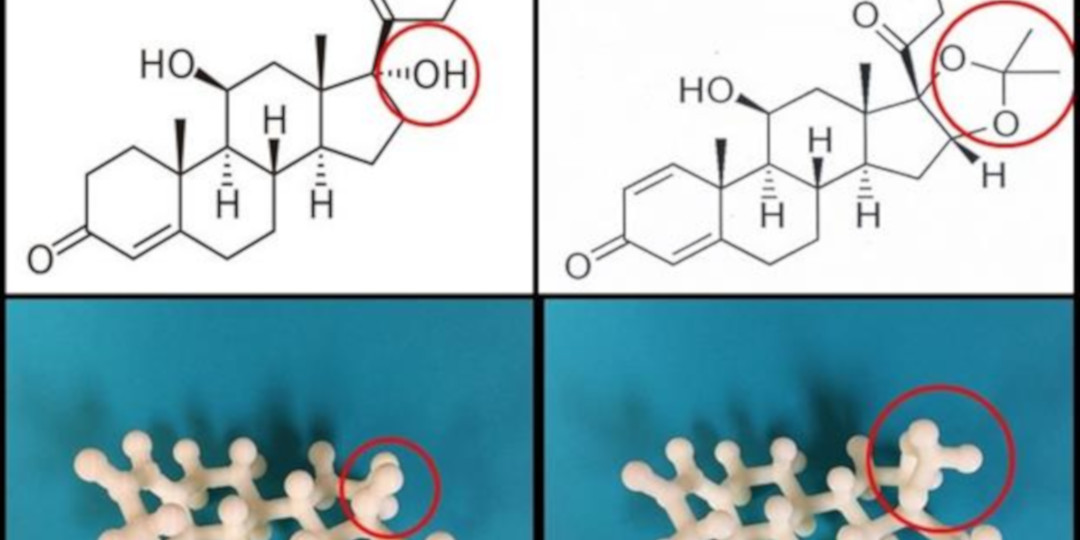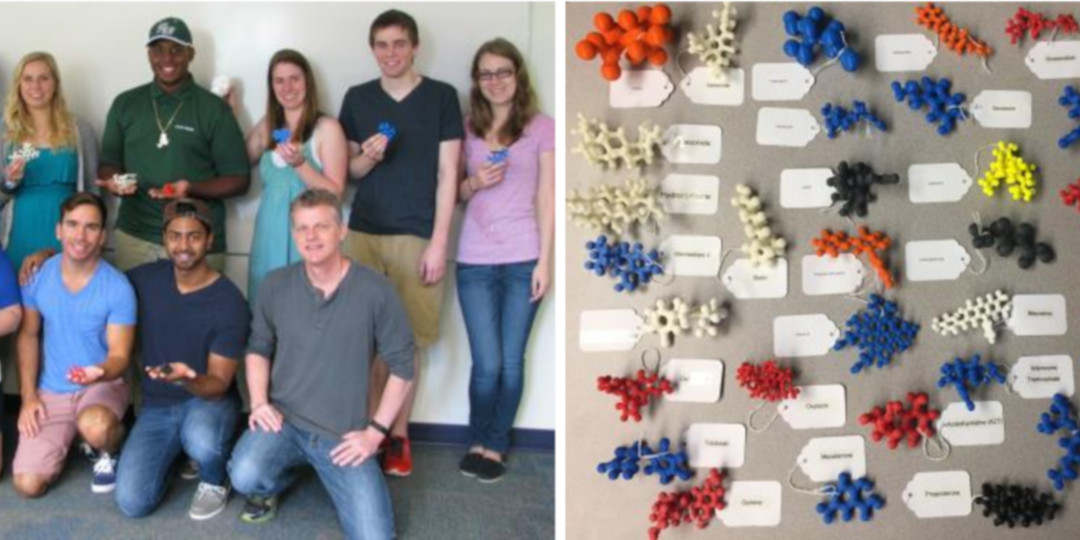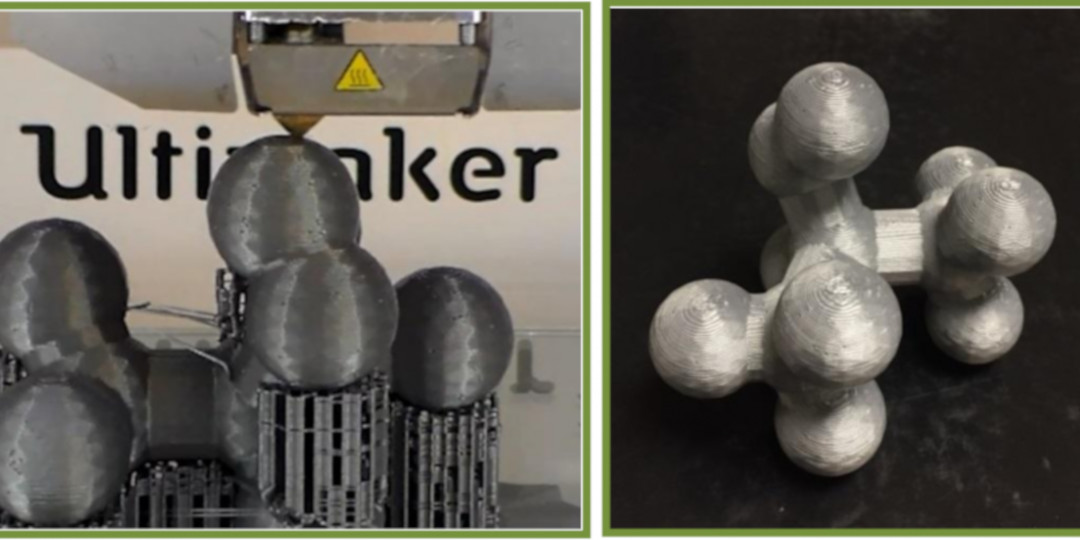

3D printable molecular models
Tandy Grubbs, Professor of Chemistry, writes about how chemistry students at Stetson University are taking advantage of 3D printing to better visualize the molecular world.


How can 3D printing be utilized to better understand chemistry? The concept of creating molecular models to serve as instructional aids has certainly been around a long time. Students of organic chemistry are often encouraged to purchase molecular modeling kits that can be used to build geometric renderings of various chemical structures. However, traditional ball-and-stick kits are limited with regard to how accurately the components can be pieced together to depict the true geometric form of a molecule. Perhaps there is a better way.
Low-cost 3D printing represents a powerful new tool that can be used by science educators and their students to create realistic, tangible models of chemical structures. 3D-printed molecular models are capable of doing far more than illustrate the atoms and bonds that make up a molecule. The models can often depict subtleties about the chemical structure that are difficult to discern using traditional modeling kits. 3D-printed models can even inform us about chemical reaction pathways—illustrating, for example, how different chemical entities fit together and interact in a three-dimensional fashion.
Students in the Department of Chemistry and Biochemistry at Stetson University, in collaboration with chemistry faculty mentors, have made use of a combination of software tools, web-resources, and 3D printing to create several different types of chemical models. Simple ball-and-stick models of common chemical structures have been constructed. More realistic, space-filling models of organic compounds, crystal structures, proteins, and other molecular complexes have also been fabricated. Originally, 3D-printed molecular models were created by students as part of independent study and senior research experiences. More recently, instructors have incorporated 3D printing activities as part of the required chemistry curriculum. 3D printing activities of this type can often make difficult to learn chemistry concepts more accessible to students and can greatly enhanced enthusiasm and motivation for learning abstract material.

‘Drug Design’: 3D-printed molecular models were constructed that illustrate the subtle structural differences between two common topical anti-inflammatory drugs, hydrocortisone (left) and desonide (right).

Each student from the Stetson Physical Chemistry class completed a lab activity whereby a unique molecule was selected and computational chemistry software was used to determine the optimized geometry of the molecule. Students then used 3D printing to create a physical model of the resulting structure.

A molecular model of the compound isopropyl alcohol; C3H7OH (aka rubbing alcohol) is 3D-printed on an Ultimaker 2+ Extended printer, using the Ultimaker Cura software.
Are you are a student who is interested in creating your own 3D printable chemical models? Or perhaps you are an educator who hopes to get students involved in similar activities. In either case, you are encouraged to check out the step-by-step tutorial (that can be accessed at the link shown immediately below) which utilizes a free, open source molecular editor and visualization tool called ‘Avogadro’ to draw a molecule from scratch. A second free software tool called the ‘Python Molecular Viewer’ is subsequently used to convert the ‘Avogadro’ chemical model into an STL file that can be 3D-printed.
ACKNOWLEDGEMENT:
We wish to thank Betty Drees Johnson for her ongoing financial support of the Stetson University duPont-Ball Library Innovation Lab.





















